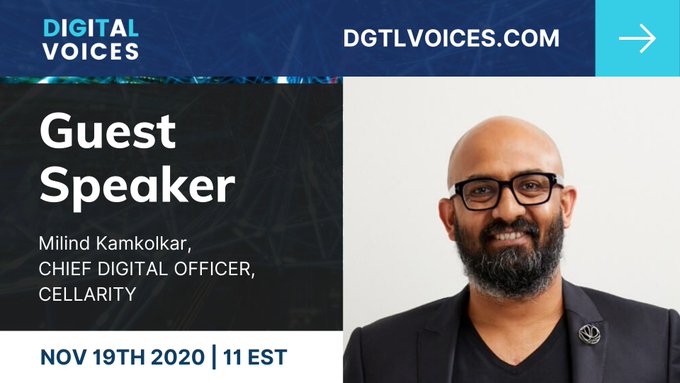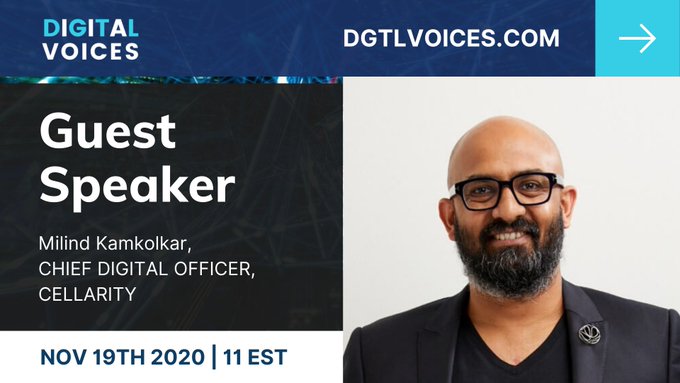The CDO Role in Pharma


The HCI Group were proud to host the world's first virtual gathering of Healthcare Chief Digital Officers during the live DGTL Voices event on November 19th 2020. The summit covered subjects across all of health and life sciences to help equip, educate and empower digital leaders. In our second talk of the day, we were joined by Milind Kamkolkar, Chief Digital Officer of Cellarity to discuss the CDO role in Pharma. Cellarity is a company that is pioneering a new generation of medicines, designed to change cell behavors and reverse the course of disease.
"Having a grassroots basis of what is the core business of any initiative where a digital operating model can in fact be applied is important to me. In the pharmaceutical industry the nature of understanding biology and creating medicines to target that biology, so that it can help humans frankly when they are either sick or facing ailment.
The first objective of the chief digital officer is to “do things better”. Improve operational efficiencies under which technology processes and skillsets can be applied to amplify or accelerate the opportunity to do things that were once held as sacred cows faster, better or cheaper. When you look at the advent of digital, in many of these companies, we can argue that that is where the major focus of business transformation is taken today.
Can we identify targets faster? Can we accelerate the development of chemical compounds towards an IND stage faster and cheaper? When we run clinical trials can we make them more efficient? I think if anything what COVID has taught us is that the notion of virtual trials is already an opportunity that we can use so that we’re not held captive with site specific ways of organizing, managing and running the trials. Additionally, in the space, be it from the first time we experience or have an opportunity to engage with a patient, the notion of customer experience and engagement comes up. This gives the opportunity to think horizontally across different industries and take those horizontal learnings, but now configure them towards the regulatory standards that actually exist in our arena. Whether it’s from salesforce optimization, marketing excellence or how we price drugs and be able to forecast the nature of pricing drugs. By taking advantage of data types and technologies, orthogonal data source as well, we can start identifying "what is the best pricing structure for a given medicine and how then do we engage really at nurturing the relationship between a physician and a patient.
We often think about the notion of patient engagement in the pharmaceutical setting and typically think about it primarily from the perspective of how do we improve patient engagement. However, the sacred relationship between a patient and their physician where we can amplify the nature of an engagement with a patient and physician is important. Whether it be understanding and being aware of disease biology indications they may be facing as a patient or encouraging the broader network such as care givers, nurses and vital staff that are vital to the patient journey. When you think about all these things combined, these are all effectively operational efficiences.
As we consider the role of the CDO in a pharma company, we must concern ourselves with "doing better things" and breakthrough innovation. In most companies this is where the change management occurs. This is where processes that exist today that enable a particular point to be reached today are now treated as sacred cows. Why? It is difficult to create breakthrough innovation if you are not prepared to actually break or disrupt current mindsets. You can always have the same process, but it could be done exponentially better, which is more than just a performance gain. It is in fact very much a business game...
Watch the DGTL Voices recording to hear more:
